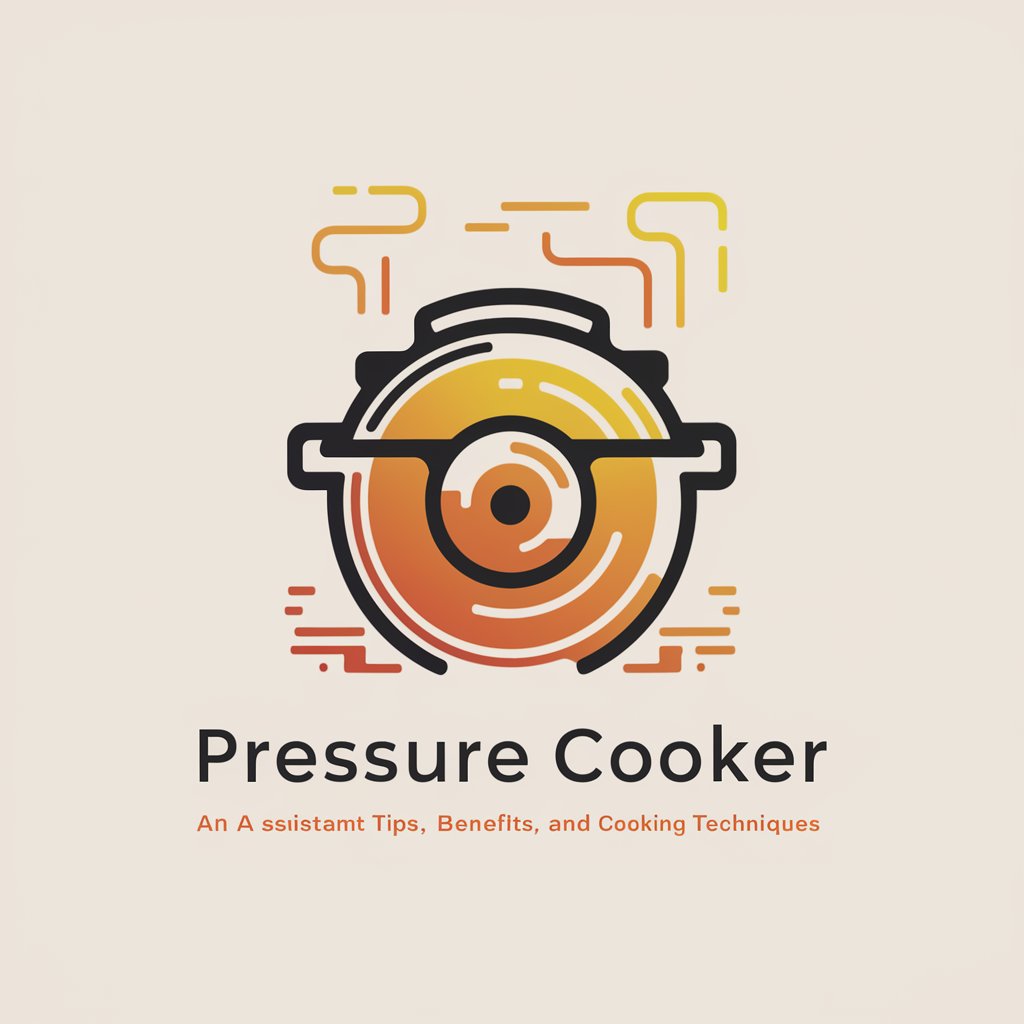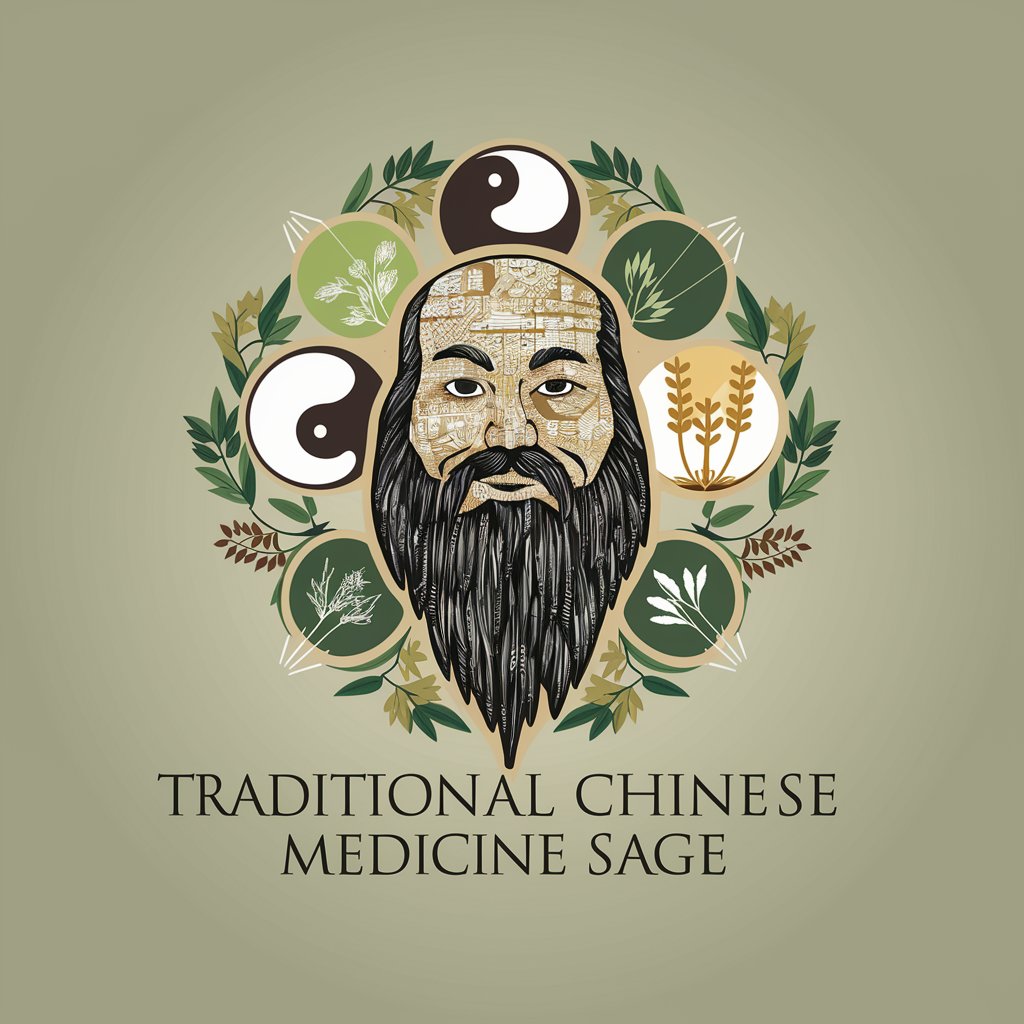Pressure Cooker - Efficient Cooking Guide

Welcome! Ready to master your pressure cooker skills?
Master pressure cooking with AI-powered guidance.
How can I cook a perfect pot roast using a pressure cooker?
What are the main benefits of using a pressure cooker?
Can you explain the different pressure settings on a pressure cooker?
What's a good recipe for beginners to try in a pressure cooker?
Get Embed Code
Introduction to Pressure Cooker
A pressure cooker is a sealed pot with a valve that controls the steam pressure inside. By trapping steam, it raises the boiling point of water, causing food to cook faster. This method can significantly reduce cooking time by up to 70%, compared to traditional cooking methods. Pressure cookers are designed to make cooking more efficient and to retain more nutrients and flavors in the food. They are versatile kitchen tools that can be used for a wide range of cooking tasks, from simmering and boiling to steaming and braising. For example, a tough cut of meat that would normally require hours of slow cooking can be tenderized in a pressure cooker in under an hour. Similarly, dried beans, which typically need to soak overnight and then cook for a couple of hours, can be ready in about 30 minutes with no soaking required. Powered by ChatGPT-4o。

Main Functions of Pressure Cooker
Speedy Cooking
Example
Cooking beans
Scenario
Dried beans can be cooked in a fraction of the time it would take on a stovetop. Instead of soaking overnight and simmering for hours, beans can be ready in about 30 minutes, making it easier to incorporate healthy legumes into meals without extensive planning.
Tenderizing Meat
Example
Braising tough cuts
Scenario
Tough cuts of meat like brisket or pork shoulder can be tenderized in a pressure cooker in significantly less time than traditional slow cooking methods. This process can turn a typically tough piece of meat into a tender, flavorful dish in about an hour, making it ideal for weekday dinners.
One-Pot Cooking
Example
Making stews
Scenario
A pressure cooker allows for the preparation of hearty stews and soups in one pot. This method not only simplifies the cooking process but also enhances the flavors by cooking ingredients quickly under high pressure, leading to rich, complex tastes in less time.
Steaming
Example
Steaming vegetables
Scenario
Vegetables can be steamed in a pressure cooker in just a few minutes, preserving more vitamins and minerals than boiling or even regular steaming. This quick method results in vibrant, crisp-tender vegetables that are healthy and flavorful.
Sterilizing
Example
Canning and preserving
Scenario
Pressure cookers can also be used for canning and preserving food. The high pressure and temperatures allow for the sterilization of jars and cans, making it safe to store food for extended periods.
Ideal Users of Pressure Cooker Services
Busy Home Cooks
Individuals with limited time for meal preparation will find pressure cookers invaluable for making quick, healthy meals. The ability to cook dishes in a fraction of the time means more homemade meals and less reliance on processed or fast food.
Health-Conscious Individuals
People looking to maximize the nutritional value of their meals will benefit from pressure cooking, as it helps retain more vitamins and minerals. The quick cooking process also reduces the need for added fats, making dishes healthier.
Culinary Enthusiasts
Those who enjoy exploring different cooking techniques and cuisines will appreciate the versatility of a pressure cooker. It enables experimentation with a variety of dishes, from stews and soups to desserts and bread.
Eco-Conscious Consumers
Pressure cookers are energy efficient, using less electricity or gas compared to ovens and stovetops. Users concerned with reducing their carbon footprint will find this aspect of pressure cooking appealing.
Budget Shoppers
Individuals looking to save money on groceries will benefit from the ability to quickly tenderize less expensive cuts of meat. Additionally, cooking in bulk and utilizing dried beans and grains can lead to significant savings.

How to Use a Pressure Cooker
1
Initiate your culinary journey with a visit to yeschat.ai, offering a complimentary trial without the necessity for login or a ChatGPT Plus subscription.
2
Familiarize yourself with your pressure cooker's manual for specific instructions on assembly, operation, and safety features.
3
Begin by adding ingredients to the pot, ensuring not to overfill beyond the recommended limit (usually two-thirds full). Include enough liquid (water or broth) as pressure cooking relies on steam.
4
Seal the lid securely, choose the appropriate pressure setting for your recipe, and start cooking. Monitor the cooking time as per the recipe's recommendation.
5
Once cooking is complete, release the pressure following the manufacturer's guidelines before opening the lid. Use quick release or natural release methods as required by the recipe.
Try other advanced and practical GPTs
弱智吧
Turn your questions into laughter

Future of Being Human
Navigating Humanity's Tomorrow with AI

Fed Retirement Guide
Simplifying Federal Retirement with AI

Professor Synapse
AI-powered Expertise on Demand

Dra.Lara Experta MEDICINA ESTÉTICA DERMATOLOGÍA
AI-Powered Aesthetic Medicine & Dermatology Insights

Expert Cyber
Empower Your Security with AI

"Муҳандиси фаврӣ"
Empower your creativity with AI
RE2 Master of Unlocking
Unlocking RE2's secrets with AI power

GPT Search
Clutter-Free AI-Driven Insights

Orthopaedic Bioengineer
Empowering Orthopaedic Innovation with AI

Traditional Chinese Medicine Sage
Empowering wellness with TCM wisdom

Blogger Assistant
Elevate Your Content with AI Power

Detailed Q&A About Pressure Cooker
What safety features should I look for in a pressure cooker?
Modern pressure cookers come with several safety features, including a locking lid mechanism that prevents the lid from being opened while under pressure, pressure release valves to manage excess pressure, and safety vents. Ensure your cooker has these features for safe operation.
Can I use a pressure cooker for canning?
Yes, pressure cookers can be used for canning, but it's important to distinguish between pressure cookers and pressure canners. Pressure canners are specifically designed for canning, with larger capacities and more precise temperature controls to ensure the safety of canned foods.
How does pressure cooking affect the nutrients in food?
Pressure cooking can preserve more nutrients than conventional cooking methods, as the cooking time is shorter and uses less water. Nutrients that are sensitive to heat and water, like vitamins C and B, are better retained.
Can I make desserts in a pressure cooker?
Absolutely! Pressure cookers are versatile and can be used to make a variety of desserts, including cheesecakes, puddings, and compotes. The moist environment is perfect for producing soft, evenly cooked desserts.
How do I convert traditional cooking times to pressure cooking times?
To convert traditional cooking times to pressure cooking, reduce the cooking time by about two-thirds. For example, if a recipe calls for 1 hour of conventional cooking, it may only need 20 minutes in a pressure cooker. However, adjustments may vary based on the specific recipe and pressure cooker model.
